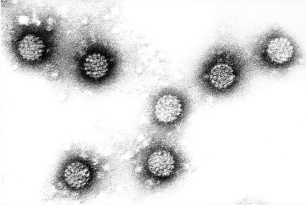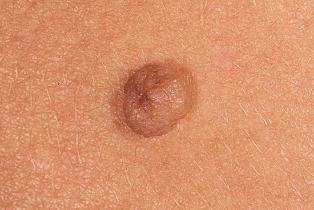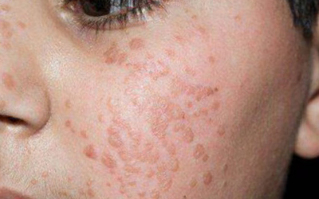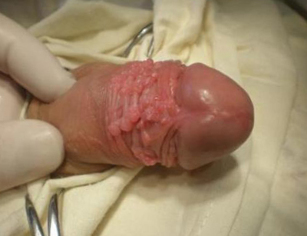
In this article, we will cover the following:
- what are papillomas;
- what is the reason for their formation.
- where they are more common in men and women;
- typical papillomas.
Papillomas are benign neoplasms located on the skin, mucous membranes. The reason for their formation is the human papillomavirus (HPV), which is transmitted in various ways. The appearance of the formations depends on the type of virus that caused them.
Transmission paths
Human papillomavirus is transmitted by:
- During sexual intercourse, including anal, oral-genital intercourse.
- Family. The microorganism can exist on personal belongings, personal hygiene items, infected towels. Easily penetrates through scratches, abrasions on the skin.
- During labor from mother to child.
Possible self-infection if the virus is transferred from one area of the body to another, which usually occurs during shaving, hair removal.
The incubation period (the period from the entry of HPV into the body to the appearance of signs of pathology) varies from several weeks to several years.
Papillomas on the body appear more often in case of illness, pregnancy, alcohol abuse, psycho-emotional stress, hypothermia, accompanied by a decrease in the immune system. The incidence of these formations in men and women is the same.

Human papillomavirus: types
Depending on the risk of oncological pathology on the skin, mucous papillomaviruses belong to the following groups:
- Low oncogenic risk (HPV 3, 6, 11, 13, 32, 34, 72, 73, 40-44, 51, 61 types).
- Medium oncogenic risk (HPV types 52, 56, 58, 30, 35, 45).
- High risk of developing malignant processes (HPV 50, 59, 16, 18, 64, 68, 70, 31, 33, 39 types).
Microorganisms with a low risk of cancer cause benign growths on the skin, mucous membranes.
Types of papillomas
Simple

They are also called vulgar, ordinary. Such growths are most often caused by HPV types 26-29, 77, 63, 41.
Tingling, burning sensation appears on any part of the body. Subsequently, the growth of a spherical formation is noted, the surface of which gradually becomes rough. At first the tumor is flesh-colored, then darkens. The size of the papilloma on the body ranges from 1 mm to cm
These neoplasms are single, multiple. In the latter case, the daughter's small papillomas are found around the maternal, formed first, usually the largest of all.
Their location is the back of the hands, the fingers, the spaces between them, the chin area, the edges of the lips. There are such papillomas on the neck. The baby's knees are affected, because babies often crawl, they become infected with small lesions on the skin.
Footbed
People with these formations are infected with HPV types 1, 2, 4. The growths are similar to dry corns, but have a number of characteristic differences.
The skin pattern is preserved on the calluses, absent on the surface of the papillomas, the latter are smooth. The formation caused by the papillomavirus is painful, unpleasant sensations intensify when wearing tight-fitting shoes. Inside the papilloma, black dots are noted, which are absent in calluses.
Neoplasms sometimes self-destruct, which is more common in children. Sometimes small bubbles are visible around the neoplasm. The latter develop into new papillomas over time.

Flat papillomas
The growths of rounded, elongated and oval shape, rise above the skin level by 1-2 millimeters. Flat papillomas are located around the mouth, on the face and in the upper half of the body. Sometimes papillomas form on the neck.
Data are available on papilloma on the lips, on the cervix in girls, on the penis in men, in the rectum, near the anus. These formations are found in groups, they merge with each other. Flesh-colored flat papillomas, sometimes slightly darker than the rest of the skin, are formed under the influence of 10, 49, 28 varieties of papillomaviruses.
Threaded
If people notice that small papillomas have appeared on the neck, most often the growths are filiform. The second name of the formations isacrochordus. The latter are caused by 2, 7 types of HPV.
At the initial stage, the papillomas on the neck look like small yellowish seals, then the growths stretch, become rough, acquire an elongated, rounded, thread-like shape. A distinctive feature of a similar papilloma on the neck is a thin leg.
Most often, acrochordus is formed in men, women over 40 years of age. Growths also occur on the skin of the upper eyelids, armpits, mammary glands, in the intimate area.
Pointed

The formation data are calledwarts,are caused by the 6, 11, 44, 42, 54, 51, 55, 89 types of human papillomavirus in women and men.
Condylomas are small, single, multiple flesh-colored growths located on the female and male genitals around the anus. There are papillomas in the vagina, labia minora, cervix. In men, warts are found on the foreskin, on the head of the penis, inside the urethra.
Separate elements sometimes merge with each other, a tumor-like formation appears, outwardly similar to a rooster's comb, cauliflower. Neoplasms are characterized by very rapid growth, a large lesion can form in a few hours.
The pathology has a recurring course. It is more severe with concomitant sexually transmitted urogenital tract infections (eg, chlamydia, gonorrhea, mycoplasmosis).
Condylomas that form on the cervix, especially inside the cervical canal, are more dangerous during pregnancy. Hormonal changes stimulate rapid growth, followed by tissue breakdown and secondary infections.
Papillomas in the mouth, larynx
Their appearance is associated with the activity of papillomaviruses 6, 7, 11, 72, 73, 57, 32 types. Formations are rounded formations on a thin or wide base. The mucous membrane around them is pale pink, with no visible pathological changes. The surface of the growths is pale pink, whitish.
Neoplasms are single, multiple, painless when pressed. They are located on the bottom of the oral cavity, on the back of the tongue, on the hard and soft palate, on the laryngeal mucosa, the size varies from 2 mm to 2 cm.

Excessive growth of the mucous membrane of the mouth bleeds when bitten, darkens due to the effusion of blood into it. The state of health in the presence of such a disease does not deteriorate, the oral cavity opens freely.
When single growths are found in an adult on the soft palate, tonsils, glottis, there is a sensation of the presence of a foreign body, a cough, the voice becomes hoarse. If the lesions become multiple, these symptoms are exacerbated.
In children, pathological growths are often bilateral, their occurrence is accompanied by the following symptoms:
- Difficulty in inhaling, exhaling, arising after physical exertion, then at complete rest.
- Cough after running, playing too much.
- Suffocating attacks withstenosisof the larynx (pathological narrowing that prevents air from entering the lower respiratory tract).
The appearance of externally different papillomas is associated with infections from various types of HPV. To remove neoplasms, you need to consult a doctor. This should be done as soon as possible if the papillomas are multiple, rapidly increase in size, cause discomfort and are constantly injured.
















































































